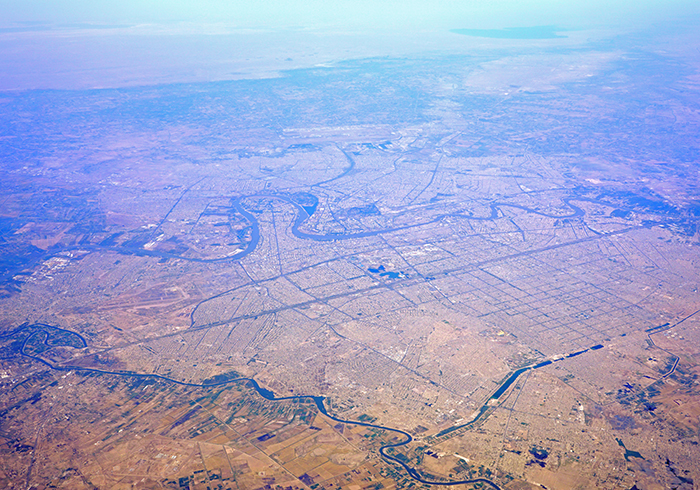The benefits of trade digitalisation are vast, enabling banks and their clients to transact more efficiently and securely, yet at the global level, progress remains patchy.
The European Bank for Reconstruction and Development (EBRD) has responded to this challenge by developing the Innovation Lab, a first-of-its-kind initiative set up to help its partner banks across the region take advantage of the opportunities digitalisation presents.
Due to be unveiled at the EBRD Trade Facilitation Programme (TFP) trade finance forum in Cairo on October 29-30, the Innovation Lab is a free-to-use online platform that brings together a repository of information, one-to-one consultation and a sandbox environment for live testing.
GTR speaks to Shona Tatchell, director of the EBRD TFP, and senior banker Marco Nindl, about the background to the initiative, what the Innovation Lab will look like, and how partner banks can expect to benefit.
GTR: What is the Innovation Lab, and what does it look like?
Nindl: The Innovation Lab will have three main elements. The first is an information hub, where our partner banks can gain general knowledge around digitalisation, trade finance and related topics.
The second is the opportunity for our partner banks to raise questions directly with our consultants and receive feedback within 24 hours. That could be in writing, if it is a fairly straightforward question, or there could be further discussion if they need more first-hand advice, for example on their overall digitalisation journey.
The third pillar is a sandbox environment, which is to help our partner banks start putting together test cases with suitable IT providers, again with the support of our consultants.
The entry point to the Innovation Lab will be a web-based platform, where our partner banks can log on. Thanks to donor funding, it’s completely free for all our partner banks, in all our countries of operation.
GTR: In practical terms, what might the journey look like for a bank using the Innovation Lab?
Tatchell: One of the first steps for a bank looking at trade digitalisation is to examine its capability. What kind of systems or platforms does it have, can those systems integrate with other technologies, and if not, what do they need to do?
To support that, we have developed a digital benchmarking process, where we work with a consultant to assess the gaps between where banks are today and where the best-in-class competitors are.
Banks can also use this process to assess what kind of investment is needed to move up the curve and start transacting digitally end-to-end.
Once that process starts, we can showcase different types of solutions with the support of an advisor who can give one-to-one consulting about a bank’s digitalisation journey. That might involve identifying different types of providers and solutions, depending on your price bracket and how big a bank you are.
Then, having made those decisions, we can help with testing and technical assistance in the sandbox environment that Marco describes, so partner banks can try out different systems but without the risk.
GTR: What was the background to developing this project?
Tatchell: Our ambition is to connect all our partners into the new digital corridors through digital integration, and that kind of network building begins with helping banks understand the transformation of trade finance in this new digital world.
The Innovation Lab started there: how do we exchange information, and create a community among our banks where they can gain knowledge from each other? If we can facilitate access to pilots, test cases and white papers about what is happening, that knowledge can then disseminate out to those banks’ clients, their regulators and the wider economy.
We want to make sure that everything can flow smoothly and seamlessly across borders, because ultimately that leads to greater efficiencies, more integration and more resilience within the trade system.
Nindl: For context, we have more than 120 partner banks, from Mongolia to Morocco and soon down into Sub-Saharan Africa. A lot of them are smaller-sized regional banks that don’t necessarily have the same access to technology, information and tech providers that some of our confirming banks do.
We have already had an online advisory for nearly two years, but that is tailored for technical questions around letters of credit, guarantees and so on. Taking that principle to digitalisation is a natural progression, but of course it will be much more than an online advisory.
This has risen out of the recognition that all of our clients, whether they’re banks, SMEs or corporates across our region, will need a digital mechanism to trade in the future.
GTR: What kind of challenges around digitalisation does the Innovation Lab hopes to address, and how does it feed into EBRD’s wider work on trade digitalisation policy?
Tatchell: There are different barriers in every market, and even when you think you have all the pieces in place, access to the right information and the right legislation underpinning it, it doesn’t necessarily happen on its own. There is still a lot of capacity building required.
Hopefully, what will come out of this process is more and more case studies, which will all feed back into the information hub. It creates a continuous cycle of testing, learning, experimenting and getting up that curve.
We are also working to support legal reforms, ensuring that the UNCITRAL Model Law on Electronic Transferable Records and UN trade facilitation conventions are implemented across our region.
There are lots of small pieces within the digital ecosystem that have to be in place in order for everything to flow smoothly. As the TFP, we see our role not only in managing transactions, but also building all of this capacity, and again, helping develop a digital trade network.
GTR: Are there any areas around digitalisation you would highlight, where you expect banks to prioritise their efforts?
Tatchell: We’ve identified four main streams where banks are looking to digitalise, but of course, there may be other themes or topics of interest that come out of this as well.
These four streams are operational efficiency, such as document checking and process automation; identifying and accrediting sustainable finance transactions; compliance and transaction screening, to prevent sanctions evasion and money laundering; and innovation, for example around electronic bills of lading, electronic certificates and data that is used for customs.
GTR: What would be your message to banks, technology providers and other companies interested in the Innovation Lab?
Nindl: It’s a work in progress, and we have lots of ideas. I’m sure that over the months and years we will see plenty of activity and progress.
Our message now is that we invite providers to get in touch with us, or with our consultants T3i Partner Network, because our vision is all about cooperation. We are not crowding anyone out; we want to build the digital trade community.








